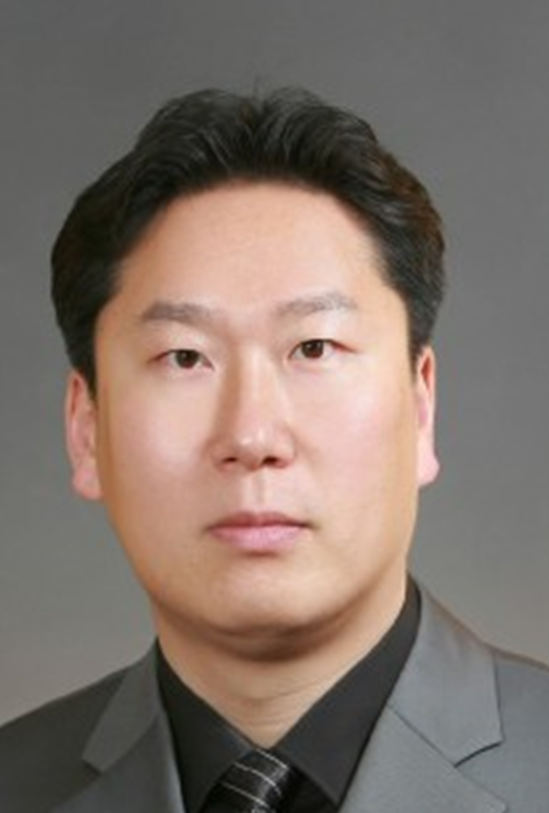- Ajou GSIS
- Academics
- Admissions
-
Student Life
Student Life
- Alumni
-
Notice
Notice
Notice
Ajou Univ. News
NEW Professor Kim Dong-wan’s Research Team Develops New Bacteria-Powered Battery
- 2013-11-11
- 31331

Professor Kim Dong-wan’s Research Team Develops New Bacteria-Powered Battery
The team led by Professor Kim Dong-wan of the Department of Energy Systems in Ajou University has succeeded in synthesizing a nano powder that could be used on the electrodes of supercapacitors located on the surface of bacteria. This development is significant in that the process is relatively simple and effective in synthesizing metal oxide powders capable of being used as high-performance electrode materials that are environmentally-friendly at room temperature.
The supercapacitors have a lower energy density than a lithium ion battery but are capable of rapid recharging and discharging a high power density. The supercapacitors represent a next-generation energy storage device that are highly efficient and semi-permanent and can be used as an alternative for subsidiary batteries or battery substitutes.
Professor Kim’s discovery was published in the online edition of Scientific Reports, on July 31, under the title, “Scalable One-pot Bacteria-Templating Synthesis Route toward Hierarchical, Porous-Co3O4 Superstructures for Supercapacitor Electrodes.” Synthesizing a nanopowder using high-molecular biomaterials, such as DNA, proteins and viruses, produces unique structures due to their diversity of shapes and properties; moreover, the surface area is large and can be produced at a lower temperature. However, the high price of high-molecular biomaterials, the complexity of the process and lower yield were limitations of this process.
The Team led by Professor Kim has synthesized a cobalt oxide nano powder at the gram level on the surface of bacteria. This means large quantities can be gained through easy manipulation. The team increased the yield to the gram level from the previously obtained micro- and milligram levels. The produced cobalt oxide has a large surface area and micro pores and is anticipated to be applied as a material for electrode in devices such as next-generation energy storage devices.
The micrococcus is a 0.5-1 micrometer sized round-shaped bacteria surrounded by a thick cell wall composed of various negatively charged functional groups to which metal cations can easily adhere. Therefore, the transition metals, including the cobalt oxides, are used as the material for electrodes due to their high capacitance due to oxidation reduction exchanges compared to the existing active carbon electrodes.
The yield was improved due to the high yield of bacterial reproduction, their amenability to genetic modification, and strong absorption of metallic ions to the cell walls. Absorption occurs due to the electrostatic tension between the negatively charged cell walls and positively charged cobalt ions. The powder is also easy to obtain as it can be processed in a solution at room temperature and under normal pressure.
The synthesized cobalt oxide powder is expected to contribute to increasing the capacitance and longevity of the supercapacitors. This is because the density of energy storage will increase due to the larger area of contact for ions in the electrolyte due to the micro pores between the powder particles spread evenly on the surface of the bacteria. In addition, the storage efficiency will be maintained at greater than 95% even after 4,000 recharges and discharges. The speed of the charging will also be increased.
Professor Kim explained that the outcome of this study is the "process of synthesizing a metal oxide nano powder of various compounds that could be used as a material for the electrodes to be used in next-generation energy storage devices that provide a higher yield."
Shim Hyeon-woo, a doctoral candidate in energy systems and the first author of the research paper, mainly led the research project. The co-researchers included Professor Kim Du-heon of the Department of Molecular Science and Technology and his research team, who helped with bacterial cultivation.
Images |
<Diagram of a Bacteria-Templating Route for Synthesizing a Cobalt Oxide>
(a) Micrococcus template
(b) Cell wall structure including bacteria template functional groups
(c) Bacteria template negatively charged due to functional groups
(d) Diagram of a bacteria-templating route for synthesizing cobalt oxide
 아주대학교 국제대학원
아주대학교 국제대학원